Search the whole station Crushing Equipment
Making titanium ore cleaner adds value. This is called beneficiation. Or you can say purification. It removes unwanted rock and minerals. It makes the amount of titanium higher in the final product. This cleaner material is called titanium concentrate. Selling cleaner concentrate brings more money. How to get higher value from ore is shown.
Last Updated: March 2025 | Estimated Reading Time: 18 Minutes

Processing titanium ore is not always easy. It is often harder than processing some other minerals. Iron ore, for example, can be simpler. Titanium minerals are usually mixed very tightly with rock that is not wanted. This unwanted rock is called gangue. The pieces of titanium mineral can be very small. They stick to the gangue. This makes them hard to pull apart. The specific nature of the ore is very important. The minerals in the ore must be known. How small the titanium pieces are must be known. What unwanted minerals are present must be known.
Processing titanium ore is complex for these reasons:


Understanding the ore’s ‘mineral makeup’ is necessary. What amount is ilmenite? What amount is rutile? Are there other titanium minerals? How are the titanium minerals connected to the gangue? Are they big pieces or very small? This is called ‘liberation size’. Small liberation size means the ore needs to be ground very fine. Grinding ore very fine uses more power. It costs more money. It also makes very fine dust. Fine dust is hard to handle later in the process. Knowing which unwanted elements are present is also needed. Iron is a common unwanted part in titanium iron ore. Silica is another common one. Knowing the unwanted minerals helps choose the right cleaning method to take them out.
Knowing the specific facts about the ore is the first big step. It shows the right path for cleaning. It sets up everything done next in titanium ore processing. If this knowledge is not available, it is just guessing. Guessing usually means less value from the ore. It means money and resources are wasted.
Minerals are separated by using their differences. Physical methods use things like weight, how they react to magnets, or how they act in electric fields. These are the main ways to clean titanium ore first. These methods are often cheaper. They are also better for the environment than using chemicals.
These are the main physical methods for titanium ore processing:
| Method Name | What it uses | How it works for Titanium Ore | Common Machines Used | Benefit |
|---|---|---|---|---|
| Gravity Separation | Weight difference | Heavy titanium minerals sink. Lighter rock washes away. Works for different particle sizes. | Spiral Chutes, Shaking Tables, Jigging Separator Machines | Removes light waste rock easily. |
| Magnetic Separation | Magnetic reaction | Ilmenite is weakly magnetic. Rutile is not. Iron minerals are strongly magnetic. | Magnetic Separators (wet or dry, high or low intensity) | Removes iron minerals from titanium product. Makes ilmenite cleaner. |
| Electrostatic Sep. | Electric charge | Minerals get different electric charges and separate. Works well for dry, similar minerals. | High tension separators | Helps separate rutile from minerals with similar weight. |
These methods are often used together. For example, use Gravity Separation first. It removes a lot of the light waste rock easily. Then use Magnetic Separation. This takes out minerals that are magnetic. This makes the titanium product cleaner from magnetic unwanted parts. If rutile is present, Electrostatic Separation might be used. It separates minerals by how their surface takes an electric charge. This can separate rutile from minerals like zircon or quartz that have similar weight but different surface charge. Different methods are used one after another to clean step by step. Each step removes different unwanted parts. This combination gets closer to high-quality titanium concentrate. ZONEDING makes many types of these machines for titanium ore processing.
Using just one physical method is usually not enough. They need to be combined. Gravity Separation might be used first. It removes a lot of light waste rock simply. Then Magnetic Separation is used. This takes out minerals that are magnetic, like iron oxides. This makes the titanium product cleaner from magnetic impurities. If rutile is present, Electrostatic Separation might be needed. It separates minerals based on how their surface is charged. This can separate rutile from minerals like zircon or quartz that have similar weight but different surface charge. The smart plan: Use different methods one after another to clean step by step. Each step removes different unwanted parts. This combination helps get closer to high-quality titanium concentrate. ZONEDING helps design these step-by-step processes using different physical separation machines.
Physical methods use differences like weight or magnetism. They are good for taking out the main waste. But sometimes, physical methods cannot get the titanium concentrate clean enough. The unwanted minerals might be too much like the titanium. Or they might be stuck too tightly. Or a very, very clean titanium product is needed. If this happens, stronger methods are needed. These are chemical or thermal methods. They change the minerals using heat or chemicals.
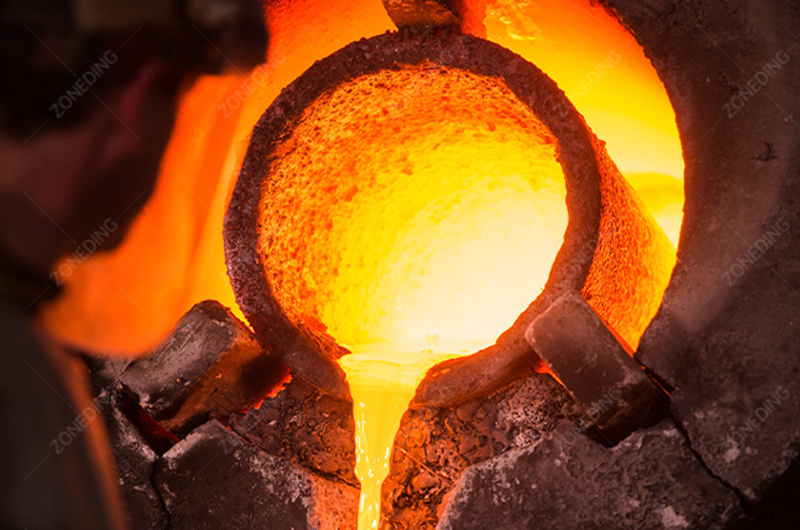
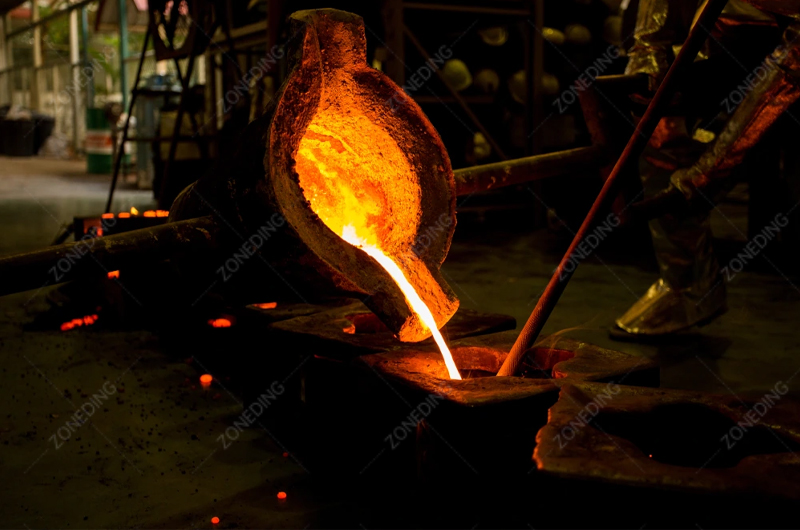
Chemical or thermal steps might be needed when:
For titanium iron ore (ilmenite), the iron inside is a problem. It makes the titanium percentage lower. To remove this iron, the chemical bond between iron and titanium must be broken.
Methods to upgrade ilmenite:
Rutile ore is usually cleaner than ilmenite. High-grade rutile concentrate can often be gotten just using physical methods. But if rutile ore has specific unwanted minerals, a small chemical step might be used. For example, washing with a mild acid to clean the surface or remove very fine unwanted parts. Chemical/Thermal steps cost more: They use more energy or chemicals. They need special machines to handle hot things or strong acids. They also need careful control of waste water and air pollution. These steps are only used when physical methods are not enough to make the product quality needed. ZONEDING machines are for the physical separation steps. Other special plants would be needed for smelting or leaching processes.
Deciding to use chemical or thermal steps is about balancing the value gained with the cost. If buyers pay much more for very pure titanium, the extra cost might be worth it. If they are okay with lower purity, physical methods might be enough. The buyer’s required purity should be considered: What purity is really needed? Smelting ilmenite costs a lot for energy. Leaching ilmenite costs a lot for acid and handling used acid. These steps make the product better, but they also make it more expensive to produce. The cost of these steps must be looked at. Then the extra money gotten from selling a purer product. This is a business decision based on what the ore is like and what the market wants.
Many titanium ores have very small titanium pieces. They often have clay or sticky mud mixed in too. Small particles and clay cause problems in the processing plant. Small particles are hard to separate well. Clay makes everything sticky. It covers other minerals. It stops separation machines from working right. It also makes water systems hard to manage. Dealing with fine dirt is a major issue for many plants. If fine particles are not handled, titanium is lost into the waste. If clay is not handled, machines get stuck.
Here are problems with fine grains and clay:
To handle fine grains and clay, specific steps are needed in the process.
Steps to manage fine grains and clay:
Washing and desliming with Hydrocyclones are often done early. They remove the sticky clay before it causes problems for later machines. Dealing with fine titanium particles that get past normal machines is harder. Special parts of the plant might be needed to get these very small pieces. This means using machines made for very small grains, like some Magnetic Separators or fine particle Flotation Machines.
ZONEDING provides Sand Washing Machines and Hydrocyclones to help manage clay and fines. Important fact: Handling fines well means less titanium is lost. Losing less titanium means more final product is sold from the same amount of raw rock.
Dealing with clay and fine particles also helps manage water. If the clay can be made to settle faster using flocculants or thicker machines like a High Efficiency Concentrator, more water can be used again. This saves money on power for pumping. It saves money on needing fresh water. It also makes handling waste easier. Waste material with less water is better for the environment. Using Hydrocyclones is a common way to quickly get fine clay out of the water. This helps the rest of the machines handle cleaner ore.
Titanium ore usually has either titanium iron ore (ilmenite) or rutile as the main titanium mineral. Sometimes it has both. Ilmenite and rutile are different minerals. They do not have the same properties. This means different steps are needed in the plant for each one. The same plant design cannot be used for ore that is mostly ilmenite and ore that is mostly rutile.
Here are the main differences and how they affect the process:
| Feature | Ilmenite (titanium iron ore) | Rutile | Process Needs |
|---|---|---|---|
| Chemical Make | FeTiO3 (Iron and Titanium together). About 40-50% TiO2. | TiO2 (Mostly pure titanium dioxide). Over 90% TiO2. | Ilmenite often needs later steps to remove iron. Rutile does not usually need this. |
| Magnetism | Weakly magnetic. | Not magnetic. | Ilmenite needs Magnetic Separators. Rutile does not react to magnets. |
| Common Companions | Other magnetic iron minerals, lighter gangue. | Other heavy, non-magnetic minerals like zircon, garnet, staurolite. | Rutile needs methods that separate non-magnetic heavy minerals, like gravity and electric. |
| Typical Process | Crushing -> Grinding -> Gravity Separation -> Magnetic Separation -> (Maybe) Upgrading for iron. | Crushing -> Grinding -> Gravity Separation -> Shaking Tables -> Electrostatic Separation. | The main separation tools are different after grinding. Ilmenite uses magnetism, Rutile uses density and electricity |
If the ore has both ilmenite and rutile, the process is more complex. Ilmenite might be separated first. Its weak magnetism is used. Then the part that is not magnetic is taken. This part is processed separately to get the rutile. Gravity and electrostatic methods are used for the rutile part. Or gravity might be used first to collect all heavy minerals. Then ilmenite is separated from rutile using magnetism and electricity on the heavy mix. The process must fit the mineral type: Rutile ore is not processed like ilmenite ore. A good final product will not result otherwise. The machines and steps are different for each. Knowing which titanium mineral is present is very important.
ZONEDING engineers help figure out the correct process steps based on the specific ore minerals. They design the process flowchart.
After the minerals are separated, the titanium product must be good quality. This means it has a lot of titanium dioxide (TiO2). It also means it has low amounts of unwanted elements. Buyers have very specific rules for quality. For example, titanium concentrate used to make white paint needs to be very, very clean. It needs low levels of iron, chromium, vanadium, and other elements. These elements can make the paint not white. For making titanium metal, the purity is also very important.


To make sure the product is high quality:
Getting the liberation size right is very important. If the ore is not ground enough, the titanium is still stuck to the waste. It cannot be separated well. If ground too much, too many very small particles are made. These are hard to get back. They get lost. Using a Spiral Classifier helps sort particles by size after grinding. This makes sure particles go to the right separation machines based on their size.
Cleaning the product many times makes it purer. For example, run the material from a Magnetic Separator through it again. Or run it through a different type of Magnetic Separator. Using re-circulation means material that is not clean enough goes back for another try. This helps get more good product. It also makes the final product cleaner. Goal: Make TiO2 high and unwanted elements low. Testing the final product all the time is necessary. This makes sure what buyers need is made. If tests show low quality, the plant can be stopped and something fixed. ZONEDING machines help with the physical steps that get high-quality separation.
Picking the right machines is very important for the plant. The right machines work well with the ore type. They help make a good product. They help keep costs down. The wrong machines will cost money and cause problems. Several things need to be thought about when choosing titanium ore equipment.

These are key things to think about when picking equipment:
Start by knowing the ore well. The ore’s ‘genes’ tell what machines are needed. If the ore is very hard, strong crushers like Jaw Crushers are needed. If the titanium pieces are very small, fine grinding machines are needed. These are machines like Ball Mills or Rod Mills. Machines that can handle fine particles for separation are also needed. These can be Shaking Tables or specific fine particle Magnetic Separators. If the ore is magnetic (like ilmenite), Magnetic Separators are needed. If it is heavy but not magnetic (like rutile), Gravity Separation machines are needed.
The needed capacity tells the size of machines. A plant processing 100 tons per hour needs bigger machines than one processing 10 tons per hour. Make sure the size of all machines in the line matches. If one machine is too small, it slows down the whole plant. Also, think about how much it costs to run the machines. Grinding uses a lot of electricity. Some separation methods use a lot of water. Some machines wear out parts faster. Smart choice: Pick machines that fit the ore type and the available money. ZONEDING has many different titanium ore equipment. This includes different types of crushers (Jaw Crushers), grinders (Ball Mills, Rod Mills), separators (Magnetic Separator, Spiral Chutes, Shaking Tables), and classifiers (Spiral Classifier). Help is provided for choosing the right ones.
The money spent to buy the machine is one cost. The money to run it is another cost. This running cost is often bigger over the years. Grinding machines like Ball Mills use a lot of electricity. They also need grinding balls or rods. Magnetic Separators use electricity too. Machines like Shaking Tables use water. Think about these long-term costs when choosing. A machine that costs more to buy might use less power or have parts that last longer. This saves money over many years. Always ask about how much power is needed and how much wear parts cost for the machines being considered.
Getting as much titanium as possible from the raw ore is the goal. This is called recovery. Making the final product (concentrate) have a lot of titanium in it is also the goal. This is called grade. High recovery and high grade together mean the most money is made from the ore. Careful setup and tuning of the plant process is needed to do this.
How to get more titanium out and make it cleaner:
Getting the grinding right with machines like Ball Mills and Rod Mills and then sorting with a Spiral Classifier is step one. If the titanium is not free from the waste rock, it cannot be separated. Grinding correctly helps both recovery and grade. Tuning the separation machines is key. Just like tuning a radio, small changes help get the clear signal (the titanium).
ZONEDING machines allow small adjustments to match the ore. Goal: Get both high recovery AND high grade. Sometimes making one better makes the other worse. The best balance needs to be found. Cleaning in multiple steps and getting lost titanium from the waste helps make both numbers higher. This needs careful planning of the process steps.
Think of the processing plant as many connected steps. Each machine does one job. What comes out of one machine goes into the next. If one machine is not working well, it makes the whole line work badly. Making small improvements at each step adds up to big overall improvements. Testing the material between steps helps find problems fast. It tells which machine needs adjustment. It helps waste less and make more valuable product. Using machines like Magnetic Separators or Spiral Chutes in the right order and with the right settings makes a big difference.
Working with mines and processing rock changes the environment. Titanium ore processing has its own challenges. Water is used. Waste rock and fine dirt are made. Chemicals might be used if upgrading steps are done. These effects must be handled well. Rules about the environment are strict. Following the rules helps the planet. It also helps the business run without trouble from the government or local people.
These are the main environmental challenges:
How to deal with these challenges:
Handling waste material is a big job. A safe place for a very large amount of waste is needed. Taking water out of tailings using thickeners (High Efficiency Concentrator) helps a lot. It means less wet mud is stored. Stacking dry tailings is becoming more common. It uses less space. It is often safer than wet dams. Water is used a lot in physical separation. Cleaning and using water again is important. It saves water. It also reduces pollution. Taking care of the environment: It is a needed part of the work now. Plan for environment needs from the very start of the project. It costs less to build controls in than to add them later. It helps the business be responsible. ZONEDING thinks about environmental needs when designing the plant.
Question 1: Is all titanium ore the same type?
No. Titanium ore is different depending on where it comes from. The main minerals (ilmenite or rutile), how hard it is, how small the titanium pieces are, and the unwanted minerals are different.
Question 2: Can ZONEDING provide all machines for titanium ore processing?
ZONEDING provides machines for the physical separation steps. This includes machines for breaking rock (Jaw Crushers), grinding (Ball Mills, Rod Mills), sorting by size (Spiral Classifier), magnetic separation (Magnetic Separator), gravity separation (Spiral Chutes, Shaking Tables), and water handling (High Efficiency Concentrator, Hydrocyclone). The full physical plant process can be designed. Chemical or thermal plants for making ilmenite purer are separate.
Question 3: How much electricity is needed for a titanium plant?
It uses a good amount of electricity. Grinding with machines like Ball Mills uses a lot. The exact amount depends on the plant size and how hard the ore is.
Question 4: How important is grinding size for the ore?
Very important. Grinding makes the titanium pieces separate from waste. If not ground enough, titanium is lost. If ground too much, it is hard to separate and costs more.
Question 5: Can mobile crushers be used for titanium ore?
Yes, Mobile Crushers can be used for the first step of breaking the rock at the mine site. This helps save money on moving large rocks.
To get more value from titanium ore, it needs to be cleaned. This is titanium ore processing. It is more complex than some other ores. Titanium minerals are often small and mixed with other things. The ore’s details must be known first. Physical methods like Gravity Separation, Magnetic Separation, and Electrostatic Separation are the main tools. A mix of these methods is often used. Sometimes, after physical steps, chemical or thermal methods like smelting or leaching are needed. This is for very high purity or to make titanium iron ore purer. Handling fine dirt and clay is a challenge. Use washing, desliming (Hydrocyclone), and special machines for fine particles. The process is different for ilmenite and rutile ore. Ilmenite needs magnetic separation. Rutile needs gravity and electrostatic methods. Make sure the quality is high by testing the product often. Pick the right titanium ore equipment based on the ore type, what product is needed, and how much needs to be processed. Make the process work best by tuning machines and cleaning in steps. Handle environmental issues like waste material and used water. Use systems like thickeners (High Efficiency Concentrator) and recycle water. Plan for the environment from the start.
ZONEDING makes machines for processing minerals. Titanium ore processing is understood. Many machines are offered for the physical cleaning steps. This includes machines for breaking rock, grinding (Ball Mills, Rod Mills), separating (Magnetic Separator, Spiral Chutes, Shaking Tables), and sorting by size (Spiral Classifier). ZONEDING helps design a full physical plant process for specific titanium ore. Help is provided for picking the right machines. Help is provided for planning the plant layout. Support is provided after purchase.
If purification of titanium ore is wanted to make it worth more, good machines and a good plan are needed. Contact ZONEDING. Help can be provided with the right titanium ore processing solution. Provide details about the ore and what is to be achieved.
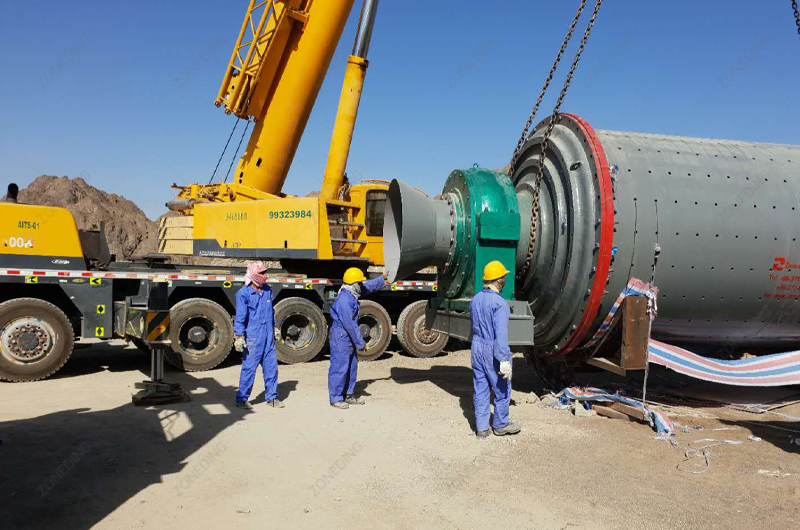
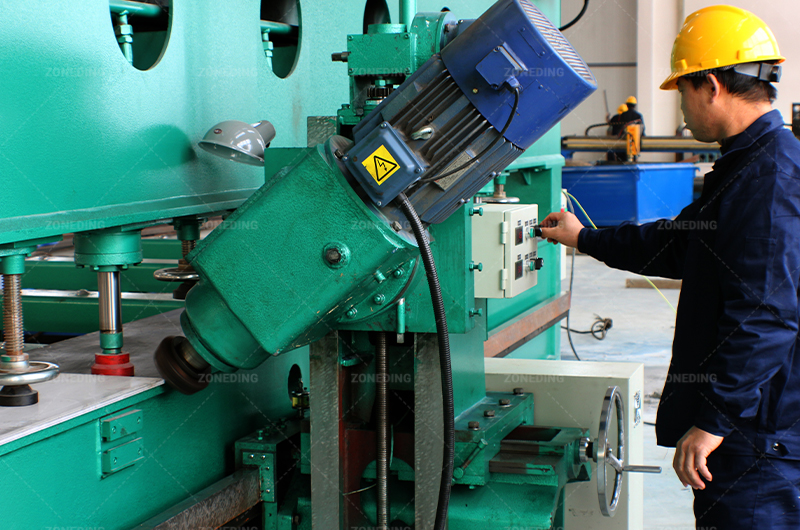
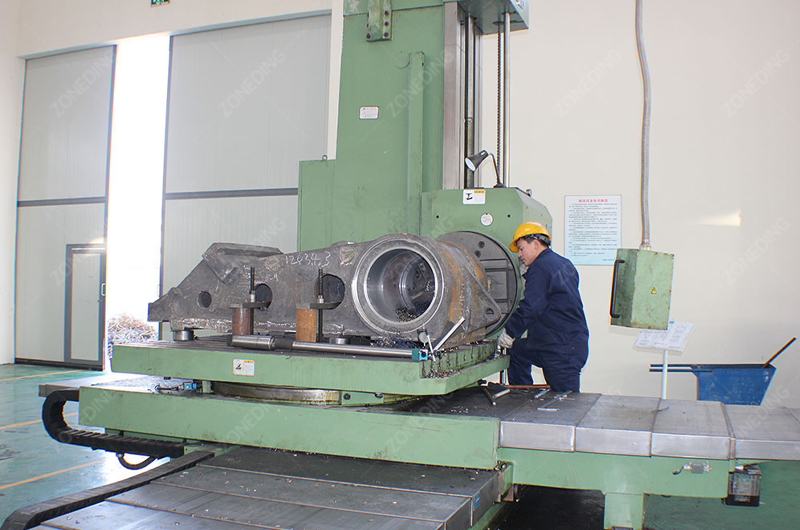
Last Updated: March 2025
We use cookies to ensure that we give you the best experience on our website. If you continue to use this site we will assume that you are happy with it.
Privacy Policy